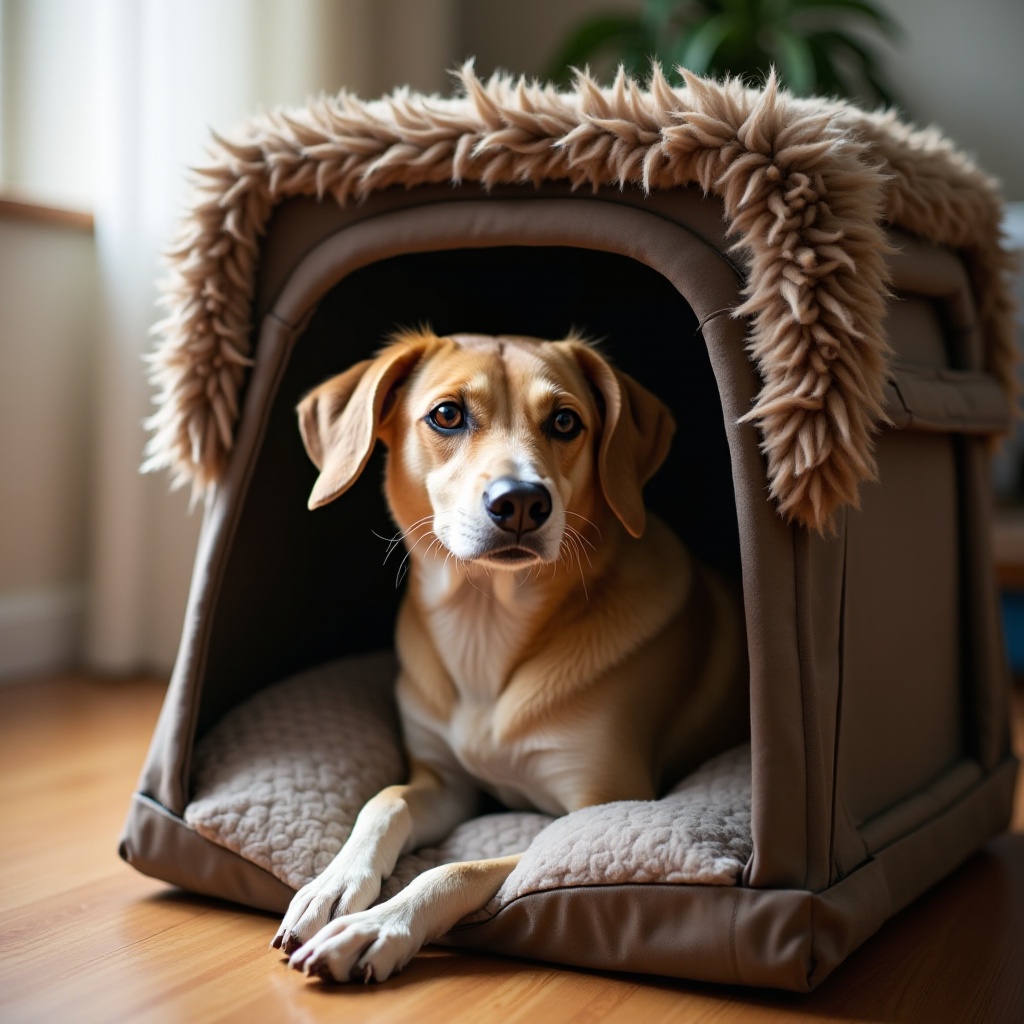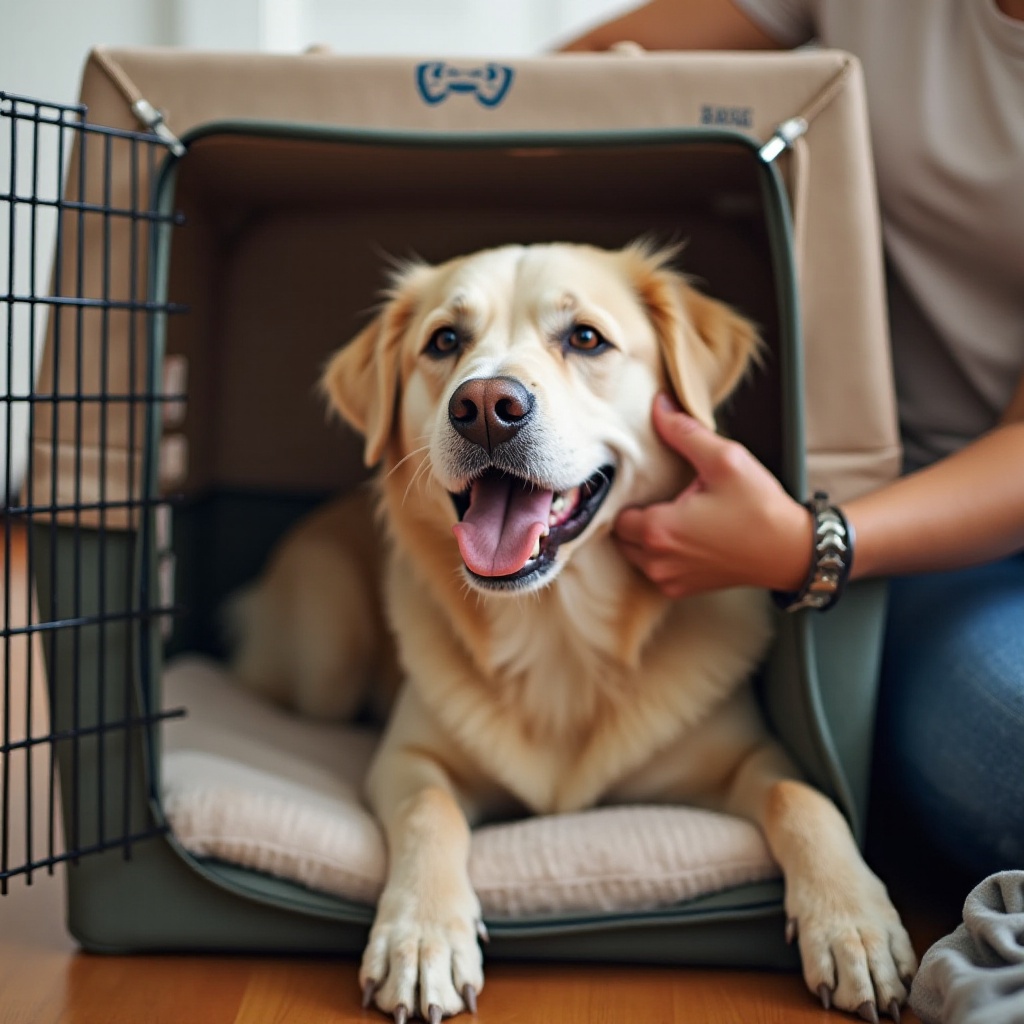Introduction
Crate training is often associated with puppies, but you might wonder, can you crate train an older dog? Many pet owners have this question when they adopt older dogs or want to introduce new routines for their senior pets. The good news is, with patience, consistency, and the right approach, you can successfully crate train an older dog. This guide will walk you through the benefits, preparation steps, detailed training process, and strategies to overcome common challenges. By the end, you’ll be equipped with the tools and knowledge to create a safe and positive environment for your older dog.

Why Crate Train an Older Dog?
Crate training offers numerous benefits for dogs of all ages. For older dogs, it provides a sense of security and a safe space where they can retreat when they need quiet time. Crates are especially beneficial for dogs that experience anxiety in new environments or around unfamiliar people. Creating a predictable and comfortable space can help alleviate stress and provide a sanctuary for your pet.
Additionally, crates assist in housebreaking. Just like puppies, older dogs can benefit from a structured environment to learn about boundaries and routines. This is critical for adopted dogs who might need guidance in adjusting to their new home.
Practically, crate training makes travel less stressful. Whether visiting the vet or going on a family vacation, having a crate-trained dog means they have a familiar, comfortable place to stay. In emergencies, crates provide a secure haven where your dog feels safe.

Preparing for Crate Training
Proper preparation is key to successful crate training. Ensuring you have the right items and setting the stage can make the process easier for both you and your dog.
Choosing the Right Crate
The first step is selecting the appropriate crate. Crates come in various sizes and materials, including metal, plastic, and fabric. Make sure the crate is large enough for your dog to stand up, turn around, and lie down comfortably but not so large that it becomes difficult to create a cozy environment.
Making the Crate Inviting
To make the crate inviting, add comfortable bedding and some of your dog’s favorite toys and treats. This helps your dog associate the crate with positive experiences. Covering the crate with a blanket can also create a den-like atmosphere that many dogs find comforting.
Introducing the Crate to Your Dog
Introducing the crate should be a gradual process. Start by leaving the crate door open and allowing your dog to explore it at their own pace. Place treats and toys inside to encourage them to go in. The goal is to make your dog feel that the crate is a safe and enjoyable place.
Step-by-Step Crate Training Process
Once your dog becomes familiar with the crate, it’s time to start the actual training process. Here’s a step-by-step guide:
Starting Slowly
Begin by feeding your dog regular meals in the crate. Start with the door open, then gradually close the door while they eat. Initially, open the door immediately after your dog finishes eating to prevent anxiety. Slowly increase the time they stay inside with the door closed after each meal.
Increasing Crate Time Gradually
Once your dog is comfortable eating in the crate, get them accustomed to staying in it for longer periods. Encourage them to enter the crate with a treat or a command like ‘crate.’ Close the door calmly, starting with short intervals of 10-15 minutes, and gradually extend the duration. Always reward them when they exit the crate to reinforce positive behavior.
Integrating Crate Time into Routine
Consistency is crucial. Incorporate crate time into your dog’s daily routine, such as during meal times or when you leave the house. This helps your dog understand that the crate is part of their everyday life. Ensure crate time is a positive experience by avoiding the use of the crate as punishment.
Common Challenges and How to Overcome Them
Despite your best efforts, you may face some challenges while crate training your older dog. Here are common issues and strategies to address them:
Resistance to the Crate
If your dog resists entering the crate, don’t force them. Instead, go back to basics. Use treats and toys to make the crate inviting and practice shorter intervals of crate time. Patience is key.
Dealing with Separation Anxiety
Older dogs, especially those with a history of abandonment, may show signs of separation anxiety. Gradual desensitization can help. Start with very short separations and gradually increase the time. Keep departures and returns low-key to avoid creating anxiety triggers.
Crate Training Previously Abused Dogs
Dogs with a history of abuse may associate confinement with negative experiences. It’s essential to create a positive crate experience. Use their favorite comfort items, maintain a relaxed environment, and reward any positive behavior related to the crate.
Tips for Successful Crate Training
These additional tips can help ensure success in your crate training efforts:
Using Positive Reinforcement
Always use positive reinforcement, like treats, praise, and affection when your dog uses the crate correctly. Rewarding good behavior encourages your dog to see the crate as positive.
Avoiding Common Mistakes
Avoid using the crate as punishment, as it can create negative associations. Also, ensure your dog isn’t crated for too long. Extended periods without breaks can lead to distress and accidents.
Maintaining Patience and Consistency
Patience and consistency are your best tools. Every dog is different, and the process might take more or less time depending on your dog’s personality and past experiences. Stick to a routine and adjust as necessary, but stay patient throughout.

Conclusion
Crate training an older dog may require more patience and a thoughtful approach compared to training a puppy, but the benefits are substantial. From providing a safe haven for your dog to easing travel stress and assisting with housebreaking, crate training is invaluable. The key to success is patience, consistency, and positive reinforcement. With these, you can help your older dog feel comfortable and secure in their new space.
Frequently Asked Questions
Is it ever too late to crate train an older dog?
No, it’s never too late. With the right approach and patience, you can crate train dogs of any age.
How long will it take to crate train an older dog?
The time varies based on the dog’s history and temperament. It may take a few weeks to several months to fully crate train an older dog.
What should I do if my older dog hates the crate?
If your dog shows severe anxiety or distress, consider consulting a professional trainer. They can provide tailored advice and techniques to help your dog acclimate.
